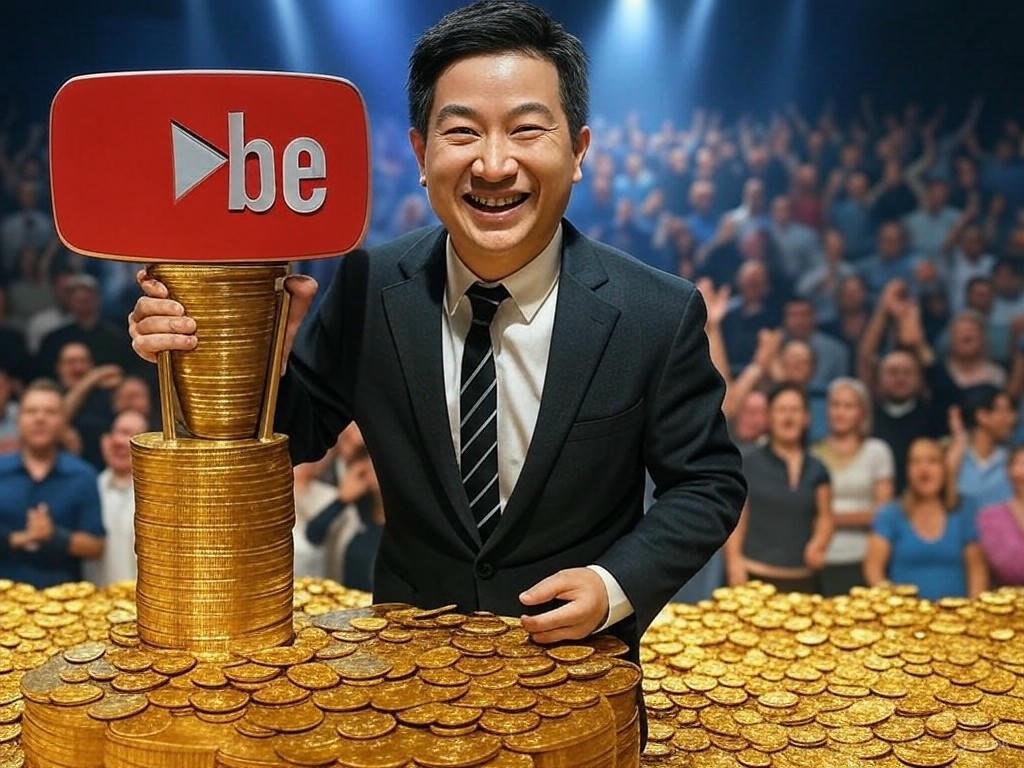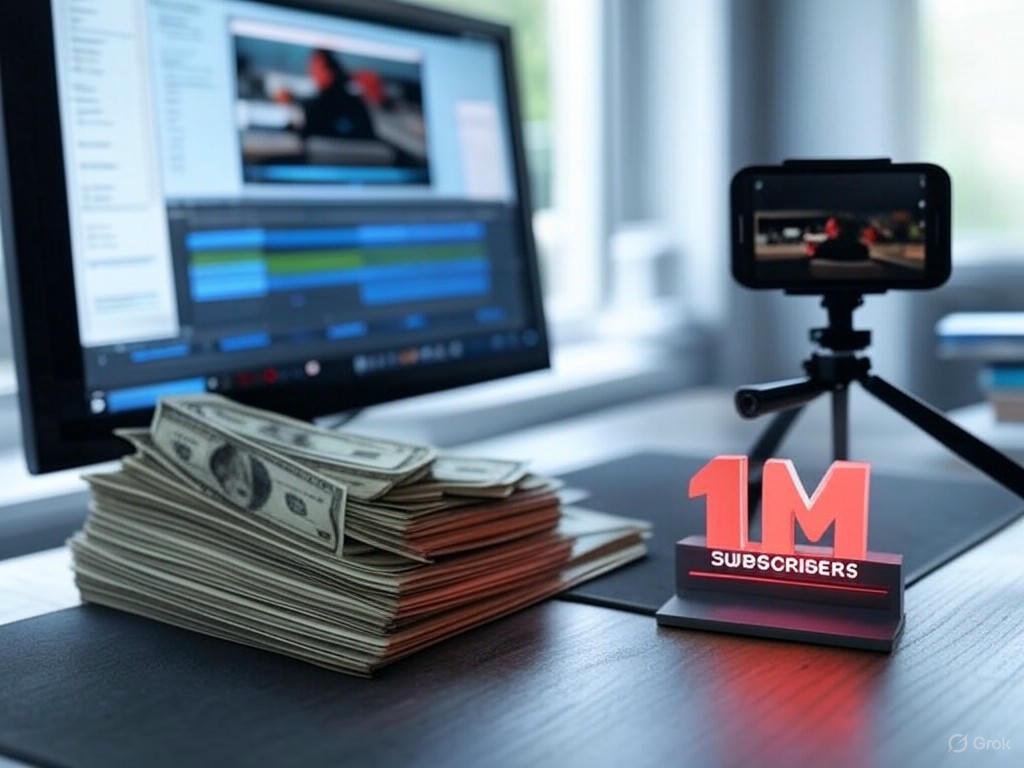YouTube has evolved from a platform for sharing quirky cat videos to a global stage where creators can build thriving businesses. If you’ve ever wondered, “How do you make money on YouTube?” you’re not alone. Millions of aspiring creators dream of turning their passion for content creation into a sustainable income stream. The good news? It’s entirely possible—but it takes strategy, persistence, and a deep understanding of the platform’s ecosystem. As someone who’s navigated the creator economy and studied the ins and outs of YouTube monetization, I’m here to break it all down for you. This guide will walk you through the practical steps, insider tips, and long-term strategies to start earning money on YouTube, whether you’re a beginner or looking to scale your channel.
Understanding the YouTube Money-Making Machine

Before diving into the “how,” let’s get clear on what makes YouTube such a lucrative platform. With over 2.7 billion monthly active users as of 2025, YouTube is a cultural juggernaut. It’s not just a place to watch tutorials or music videos—it’s a marketplace where creators, brands, and audiences connect. The platform offers multiple revenue streams, from ad revenue to sponsorships, memberships, and beyond. But success doesn’t happen overnight. It requires building a loyal audience, creating high-quality content, and leveraging YouTube’s algorithms to maximize your reach.
To make money on YouTube, you need to understand the platform’s core monetization systems and how they align with your content and audience. Let’s explore the primary ways creators earn income and how you can tap into each one.
1. Join the YouTube Partner Program for Ad Revenue
The most well-known way to make money on YouTube is through the YouTube Partner Program (YPP). This program allows creators to earn a share of the revenue generated from ads displayed on their videos. However, getting accepted into the YPP isn’t as simple as uploading a few videos. You’ll need to meet specific eligibility requirements:
- 1,000 subscribers: Your channel must have at least 1,000 subscribers.
- 4,000 watch hours: You need 4,000 public watch hours in the past 12 months.
- Ad-friendly content: Your videos must comply with YouTube’s Community Guidelines and Advertiser-Friendly Guidelines.
- Linked AdSense account: You’ll need an AdSense account to receive payments.
Once you’re in the YPP, YouTube places ads on your videos, and you earn money based on factors like viewer demographics, ad engagement, and the type of ads shown (skippable, non-skippable, or display ads). On average, creators earn $0.25 to $4 per 1,000 views (CPM, or cost per mille), though this varies widely depending on your niche. For example, finance or tech channels often command higher CPMs than vlogging or gaming channels.
Pro Tip: Focus on creating “evergreen” content—videos that stay relevant over time, like tutorials or product reviews. These videos can generate passive income long after you’ve uploaded them.
Read more: Unlocking the Secret to Earning Cash – Surveys That Pay Real Money Revealed!
2. Leverage YouTube Shorts for Quick Growth
YouTube Shorts, the platform’s answer to TikTok, is a powerful tool for creators looking to grow their audience and monetize quickly. Shorts are vertical, short-form videos (under 60 seconds) that thrive on virality. In 2023, YouTube introduced a revenue-sharing model for Shorts, allowing creators to earn from ads displayed between Shorts in the Shorts Feed.
To monetize Shorts, you still need to be in the YPP, but the requirements for Shorts-specific monetization are slightly different:
- 1,000 subscribers and 10 million public Shorts views in the last 90 days.
Shorts are a game-changer because they’re easier to produce than long-form content and can attract a massive audience quickly. However, the revenue per view is typically lower than long-form videos, so think of Shorts as a growth engine to funnel viewers to your monetized long-form content.
Actionable Tip: Use trending audio and hashtags to boost discoverability. Create Shorts that tease your longer videos, encouraging viewers to check out your channel for more in-depth content.
3. Land Sponsorships and Brand Deals
Sponsorships are where the big money often lies. Brands are eager to partner with creators who have engaged audiences, and YouTube is a prime platform for influencer marketing. Depending on your niche and audience size, you could earn anywhere from $100 to $10,000 (or more) per sponsored video.
To attract brand deals, focus on these key areas:
- Build a niche audience: Brands value creators who appeal to a specific demographic, like fitness enthusiasts, tech geeks, or beauty lovers.
- Create a media kit: This is a professional document showcasing your channel stats, audience demographics, and past collaborations.
- Reach out proactively: Don’t wait for brands to find you. Pitch to companies that align with your content and audience.
Platforms like FameBit, Grapevine, and ChannelMeter can connect you with brands, but organic outreach often yields better results. For example, if you run a cooking channel, reach out to kitchenware brands or food delivery services with a tailored pitch.
Insider Tip: Always disclose sponsored content to maintain trust with your audience and comply with FTC guidelines. Transparency builds credibility.
Read more: Hostley Turbo review – A Comprehensive Analysis
4. Offer Channel Memberships
Channel memberships are a fantastic way to earn recurring revenue directly from your fans. Once you have 1,000 subscribers and are in the YPP, you can enable memberships, allowing viewers to pay a monthly fee (typically $4.99 to $49.99) for exclusive perks like badges, emojis, or members-only content.
To make memberships appealing, offer value that resonates with your audience. For example:
- A gaming channel could offer exclusive livestreams or early access to videos.
- A fitness channel might provide workout plans or Q&A sessions for members.
The key is to make your fans feel like they’re part of a special community. Engage with members through comments, livestreams, or Discord to keep them invested.
5. Sell Your Own Products or Services
YouTube is an incredible platform for promoting your own products or services. Whether you’re selling merchandise, online courses, or consulting services, your channel can serve as a 24/7 marketing machine. Here’s how to get started:
- Merchandise: Use platforms like Teespring or Printful to create branded apparel, mugs, or accessories. Promote your merch in video descriptions and pinned comments.
- Digital products: E-books, templates, or courses are low-overhead options. For example, a photography channel could sell Lightroom presets or editing tutorials.
- Services: If you’re a coach, freelancer, or consultant, use your channel to showcase your expertise and drive clients to your website.
Case Study: Take a look at creators like Ali Abdaal, who transitioned from YouTube videos about productivity to selling online courses and templates. His channel drives traffic to his website, where he converts viewers into customers.
Read more: Synthesys Video Translate review – A Comprehensive Analysis of Translation Efficiency
6. Crowdfunding and Fan Support

If your audience loves your content, they might be willing to support you directly through platforms like Patreon, Buy Me a Coffee, or YouTube’s own Super Thanks feature. These tools allow fans to make one-time or recurring donations, often in exchange for exclusive content or shoutouts.
Crowdfunding works best for creators with a loyal, niche audience. For example, a channel dedicated to indie filmmaking might offer behind-the-scenes footage to Patreon supporters. The key is to provide tangible value to your backers.
Pro Tip: Promote your crowdfunding links sparingly to avoid coming across as pushy. A simple mention at the end of your videos or in your video description is usually enough.
7. Affiliate Marketing
Affiliate marketing is a low-effort way to earn passive income on YouTube. By promoting products or services in your videos and including affiliate links in your descriptions, you can earn a commission for every sale or sign-up generated through your links.
Popular affiliate programs for YouTubers include:
- Amazon Associates: Promote physical products like cameras, books, or gadgets.
- Software affiliates: Programs like NordVPN, Skillshare, or Canva offer generous commissions.
- Niche-specific programs: If you’re in a specific niche (e.g., fitness or tech), seek out affiliate programs tailored to your audience.
To succeed with affiliate marketing, only promote products you genuinely use and trust. Authenticity is key to maintaining your audience’s trust.
Actionable Tip: Create “best of” or “top 10” videos in your niche, linking to affiliate products in the description. These videos tend to perform well and drive clicks.
Optimizing Your Channel for Growth and Revenue
Now that you know the main ways to make money on YouTube, let’s talk about how to set your channel up for success. Monetization is only possible if you’re consistently growing your audience and keeping them engaged. Here are some expert strategies to optimize your channel:
Create High-Quality, Searchable Content
YouTube is the second-largest search engine in the world, so treat it like one. To rank higher in search results and attract more viewers, optimize your videos for keywords like “how to make money on YouTube,” “YouTube monetization tips,” or “grow a YouTube channel.”
- Titles: Write clear, compelling titles that include your target keyword. For example, “How to Make Money on YouTube Without Showing Your Face” is specific and clickable.
- Thumbnails: Design eye-catching thumbnails with bold colors, readable text, and expressive images. Tools like Canva make this easy.
- Descriptions: Include your main keyword in the first 100 characters of your description and add related keywords naturally throughout.
- Tags: Use relevant tags to help YouTube understand your video’s content, but don’t overstuff them.
Engage Your Audience
Engagement metrics like watch time, likes, comments, and shares signal to YouTube’s algorithm that your content is valuable. Encourage viewers to interact by:
- Asking questions in your videos or pinned comments.
- Creating polls in the Community tab.
- Responding to comments to build a sense of community.
Analyze and Adapt
Use YouTube Analytics to track your channel’s performance. Pay attention to metrics like audience retention, click-through rate (CTR), and traffic sources. If a video isn’t performing well, experiment with different thumbnails, titles, or content styles to see what resonates.
Pro Tip: Test posting schedules to find when your audience is most active. For example, many creators find that posting on weekdays during the evening hours (in their audience’s time zone) drives higher engagement.
Overcoming Common Challenges
Making money on YouTube isn’t without its hurdles. Here are some common challenges and how to tackle them:
- Algorithm changes: YouTube’s algorithm evolves constantly. Stay updated by following creator-focused blogs or YouTube’s Creator Insider channel.
- Burnout: Creating consistent content is demanding. Batch-produce videos and schedule them in advance to maintain a healthy work-life balance.
- Demonetization: If a video gets flagged as “not advertiser-friendly,” appeal the decision or edit the content to comply with guidelines.
Long-Term Strategies for Success
To turn YouTube into a sustainable income source, think beyond quick wins. Here’s how to build a lasting career:
- Diversify revenue streams: Relying solely on ad revenue is risky. Combine multiple income sources (sponsorships, merch, affiliate marketing) to create stability.
- Invest in production quality: Better lighting, sound, and editing can make your videos stand out. You don’t need a Hollywood budget—just a decent microphone and basic editing software like DaVinci Resolve (free) or Adobe Premiere Pro.
- Collaborate with other creators: Collaborations expose your channel to new audiences. Reach out to creators in your niche for guest appearances or joint projects.
The Mindset of a Successful YouTuber
Finally, let’s talk about mindset. Making money on YouTube requires patience, resilience, and a willingness to learn. Most successful creators didn’t hit it big overnight—they experimented, failed, and iterated until they found what worked. Treat your channel like a business, but don’t lose sight of why you started: your passion for creating content.
Start small, stay consistent, and focus on providing value to your audience. Whether you’re teaching people how to cook, reviewing gadgets, or sharing life advice, your authenticity and expertise will shine through. Keep learning, keep creating, and the money will follow.
Final Thoughts
So, how do you make money on YouTube? It’s a combination of joining the YouTube Partner Program, leveraging Shorts, landing sponsorships, offering memberships, selling products, crowdfunding, and using affiliate marketing. But more than that, it’s about building a channel that resonates with your audience and delivers consistent value. With the right strategies and a long-term mindset, you can turn your YouTube passion into a profitable venture. Get out there, start creating, and let your channel be the launchpad for your dreams.



